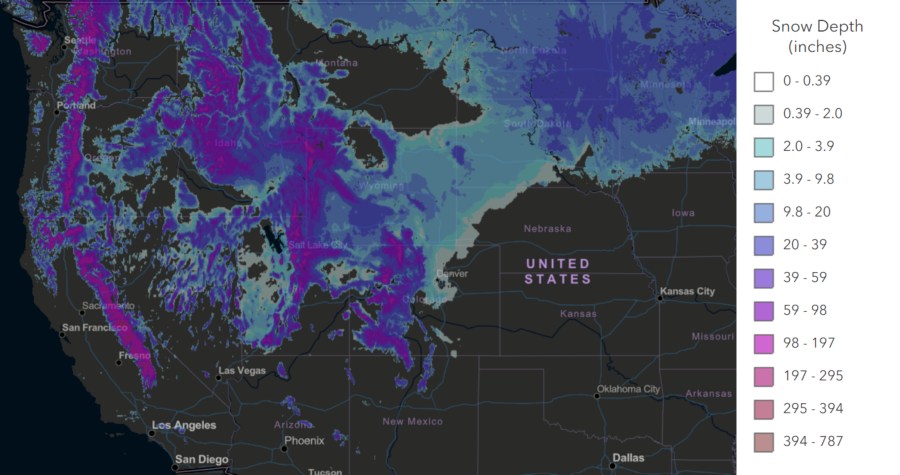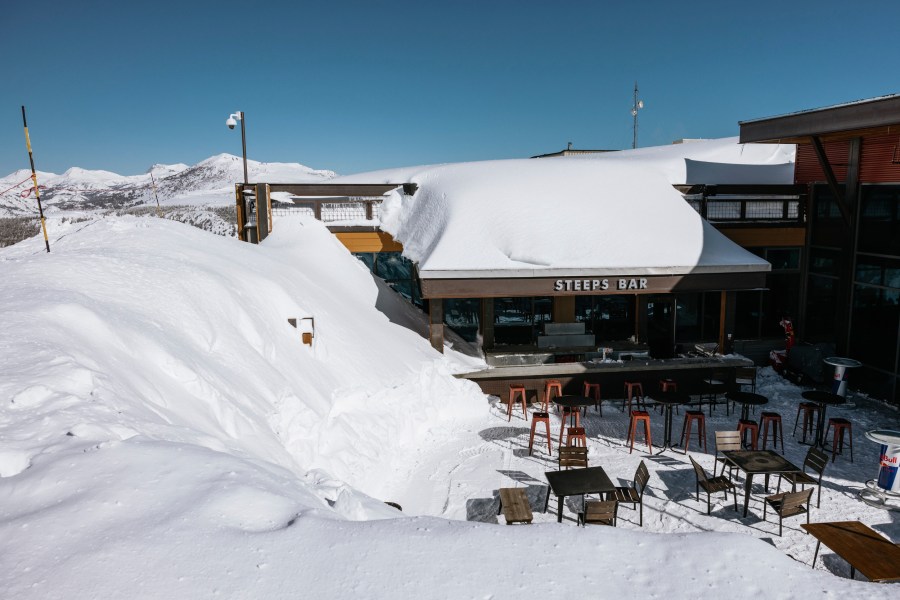PORTLAND, Ore. (KOIN) – With abundant seasonal rainfall and enough mountain snow to bury a giraffe, the Western U.S. is rapidly recovering from a years-long drought that tapped reservoirs and exhausted the region’s rivers, lakes and streams.
Experts like state climatologist Larry O’Neill, who chair’s Oregon’s Drought Monitor Advisory Committee, say that these relaxed drought conditions were implemented in response to the healthy snowpacks currently piled atop Western mountain ranges. The snowpacks, National Weather Service Hydrologist Andy Bryant told KOIN 6 News, sustain summer water supplies and improve stream conditions for local wildlife.
While much of Oregon is still experiencing some form of drought, conditions continue to improve as the Oregon Cascades maintain more than one and a half times their average annual snowpack levels. But how does Oregon’s snowpack compare to the rest of the West?

The U.S. Forest Service snow depth map shows that many of the West’s mountain ranges hold roughly 10 to 20-plus feet of snow, but it’s unclear which areas have deeper snowpacks than others. Using data recorded by the National Oceanic and Atmospheric Administration’s various automated snow monitoring sites, KOIN 6 has compiled a list of some of the deepest snowpacks recorded across the West to see what state’s hold the deepest snow.
Oregon
- Mt Hood: 15.5 feet
- Upper McKenzie River in the Willamette National Forest: 14.8 feet
- Crater Lake: 14.3 feet
- Taylor Butte, Willamette National Forest: 11.1 feet
- Little Meadows south of Detroit Lake: 11 feet
Washington
- Mount St. Helens: 18 feet
- Mount Rainier 15.5 feet
- Easy Pass, North Cascades: 13.9 feet
- Surprise Lakes: 10.75 feet
- White Pass Ski Area: 10.5 feet

California
- Leavitt Lake: 21.7 feet
- Meadow Lake: 21.6 feet
- Lake Tahoe: 19 feet
- Burnt Corral Meadows: 17.4 feet
- Gianelli Meadow: 17.4 feet
Idaho
- Bear Mountain: 22 feet
- Elk Butte: 19.8 feet
- Franklin Basin: 18.9 feet
- Chocolate Gulch: 13.5 feet
- Lost Lake 11.8 feet
Nevada
- Big Creek Peak: 16.5 feet
- Mt. Rose Ski Area: 15.4 feet
- Hole in the Mountain Peak: 9.4 feet
- Granite Peak: 9 feet
- Pearl Peak: 8.8 feet
Utah
- Alta Basin: 19.6 feet
- Clear Creek: 18.3 feet
- Monte Cristo: 16.6 feet
- Farmington: 16.5 feet
- Buck Flat: 16.2 feet
